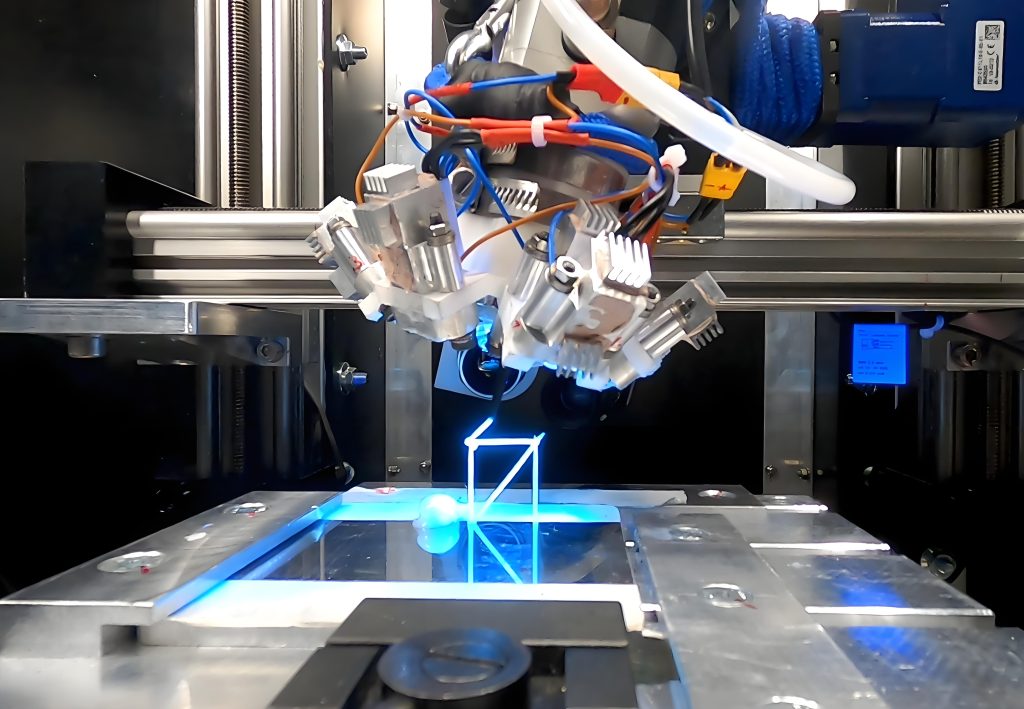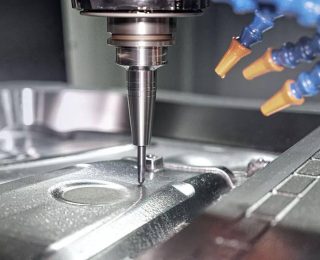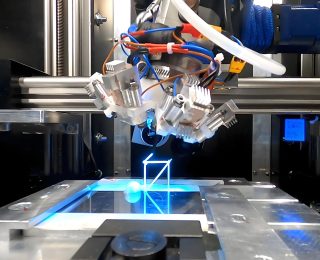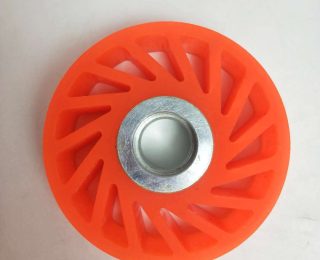Servicio de impresión 3D FDM
Fabricación rápida de prototipos y producción de piezas,Piezas tan rápido como 10 días,Inspección 100% para cada pieza
Nuestra certificación ISO 9001 garantiza la calidad de cada lote
- Sin cantidad mínima de pedido
- Fabricado rápidamente en pocos Días
- Prototipos rápidos y series completas
- Más de 30 materiales metálicos y plásticos disponibles
qué es la impresión 3D FDM
Antes de describir el principio de funcionamiento de la impresora 3D FDM, podemos imaginar una escena así: en primer lugar, se sujeta una pasta de dientes caliente, que está líquida en la caja de pasta de dientes, pero que se solidificará inmediatamente en cuanto se exprima; a continuación, se sujeta la pasta de dientes boca abajo y se exprime sobre la mesa, moviéndose horizontalmente mientras se exprime, como si se escribiera caligrafía; después de terminar el trabajo en la primera capa de la mesa, se levanta un poco la pasta de dientes y se continúa exprimiendo la pasta de dientes sobre el segundo plano. En este momento, la pasta exprimida se pegará a la pasta anterior, y la primera pasta exprimida se solidificará para formar un soporte para la pasta exprimida siguiente; por último, sigue repitiendo el proceso anterior hasta que exprimas la forma que desees. Esta es en realidad la idea básica de la FDM, y es también el principio de funcionamiento del nuevo bolígrafo de impresión 3D del mercado.
El modelado por deposición fundida (FDM), también conocido como deposición fundida o deposición de filamentos, es una técnica de impresión 3D que utiliza principalmente materiales termofusibles filamentosos como materia prima base. Este proceso implica calentar y fundir estos materiales hasta un estado líquido, lo que permite extruirlos a través de una boquilla fina. A medida que el material licuado sale pulverizado, se deposita sobre un panel o sobre la capa previamente solidificada.
A medida que la temperatura del material depositado desciende por debajo de su punto de fusión, comienza a solidificarse, construyendo gradualmente el objeto deseado mediante la acumulación de material capa a capa. Este método permite una gran precisión y control sobre el producto final, lo que lo hace adecuado para diversas aplicaciones.
Los termoplásticos FDM presentan propiedades ideales para aplicaciones que requieren tolerancias precisas, durabilidad y estabilidad en distintos entornos. Estos materiales suelen incluir termoplásticos que también se utilizan en procesos de fabricación tradicionales, como el moldeo por inyección, lo que garantiza la compatibilidad y la fiabilidad.
La versatilidad y precisión del FDM lo convierten en una opción popular para la creación de prototipos, la producción de lotes pequeños e incluso determinadas tareas de fabricación a gran escala. Su capacidad para utilizar una amplia gama de materiales termoplásticos amplía aún más su potencial de aplicación, permitiendo la creación de geometrías y estructuras complejas que pueden ser difíciles de conseguir mediante otros métodos de fabricación.
Principales ventajas de la tecnología FDM
Servicio de impresión 3D FDM
(1) El principio de construcción y el funcionamiento de las piezas de extrusión por fusión en caliente son relativamente sencillos, la operación de mantenimiento es relativamente cómoda y el funcionamiento del sistema es relativamente seguro.
(2) El coste de fabricación y el coste de mantenimiento son relativamente bajos, y el precio es muy competitivo.
(3) Existe un proyecto de código abierto que lo respalda, y la información pertinente es relativamente fácil de obtener.
(4) El proceso de impresión es relativamente sencillo, el flujo del proceso es corto y se requiere impresión directa sin rascadores ni otros procesos.
(5) La complejidad del modelo no afecta al proceso de impresión y puede utilizarse para fabricar objetos con cavidades y orificios complejos.
(6) Las materias primas no sufren cambios químicos durante el proceso de impresión, y la deformación por alabeo de los objetos impresos es relativamente pequeña.
(7) La tasa de utilización de materias primas es alta, y la vida útil del material es larga.(8) El modelo de cera impresa puede combinarse con técnicas tradicionales y utilizarse directamente en la fundición a la cera perdida.
Características de la tecnología de impresión 3D FDM
Entre los dispositivos de impresión 3D con diferentes tecnologías, los equipos fabricados con tecnología FDM suelen tener las características de estructura mecánica sencilla y diseño fácil, y el coste de fabricación, el coste de mantenimiento y el coste de material son también los más bajos entre varias tecnologías. Por ello, todas las impresoras 3D domésticas de sobremesa actuales utilizan esta tecnología.
La tecnología clave del proceso FDM reside en la boquilla de fusión en caliente, que debe controlarse de forma estable y precisa para garantizar que las materias primas puedan mantener una cierta resistencia y tengan un buen rendimiento de adhesión cuando se extruyen de la boquilla. Además, las materias primas para la impresión también son muy importantes. Su pureza y la uniformidad del material afectarán al efecto final de la impresión.
Una de las principales ventajas de la tecnología FDM es que es sencilla de fabricar y tiene un bajo coste. En el caso de las impresoras 3D de sobremesa, no se añaden componentes de control a la pieza de descarga, lo que dificulta el control preciso de la forma de descarga y el efecto de moldeo. Al mismo tiempo, la temperatura tiene un gran impacto en el efecto de moldeo FDM, y las impresoras 3D FDM de sobremesa suelen carecer de equipos de temperatura constante. Esto hace que la precisión del producto acabado de las impresoras 3D de sobremesa basadas en FDM sea normalmente de 0,3~0,1 mm. Sólo unos pocos modelos de gama alta pueden soportar espesores de capa inferiores a 0,1 mm, pero debido a la influencia del control de la temperatura, el efecto de impresión final sigue sin ser lo suficientemente estable. Además, cuando la mayoría de las impresoras 3D FDM están imprimiendo, el borde de cada capa es propenso a un "efecto escalón" causado por la deposición en capas, lo que hace difícil conseguir un efecto de impresión 3D WYSIWYG. Por lo tanto, los equipos FDM rara vez se utilizan cuando se requiere una gran precisión.
Principales desventajas de la tecnología FDM
(1) En la superficie de la pieza moldeada aparecen rayas escalonadas muy evidentes, y la precisión general es baja.
(2) Debido a las limitaciones del material y del proceso, la resistencia a la fuerza del objeto impreso es baja, por lo que deben añadirse estructuras de soporte para estructuras especiales.
(3) La resistencia del material a lo largo de la dirección del eje Z de la pieza moldeada es relativamente débil, y no es adecuada para imprimir objetos grandes.
(4) Es necesario imprimir uno a uno de acuerdo con la forma de la sección transversal, y debido a la influencia de la inercia, la boquilla no puede moverse rápidamente, lo que resulta en un proceso de impresión lento y un largo tiempo de impresión.

Otras capacidades de fabricación
Estamos especializados en impresión 3D, mecanizado CNC, fundición en vacío, moldeo por inyección y fabricación de chapa metálica, ofreciendo una amplia variedad de materiales y acabados superficiales.

Mecanizado CNC
Disponemos de centro de mecanizado de composites fresado-torneado, 3 ejes estándar, 5 ejes continuos, fresadora de 3+2 ejes, taladrado y postprocesado utilizando más de 50 metales y plásticos diferentes, disponibles en más de 15 acabados superficiales. Tolerancias hasta ±.0000394" (0.001mm )

Fabricación de chapas metálicas
HOFeng está equipada con soldadura CO2 robotizada, pulido robotizado, soldadura láser robotizada, soldadura láser de plataforma, cortadora láser, soldadura láser manual, punzonadora CNC, plegadora, desbarbadora automática para mejorar la velocidad y la capacidad de hacer frente a las aplicaciones de producción en masa.

Servicios de fundición de uretano
Haciendo para la creación rápida de prototipos y la producción de piezas,Piezas tan rápido como 10 días,100% inspección para cada part.Our ISO 9001 Certified entregar calidad de grado con cada batch.We son los expertos en materiales de poliuretano en su desarrollo de productos
